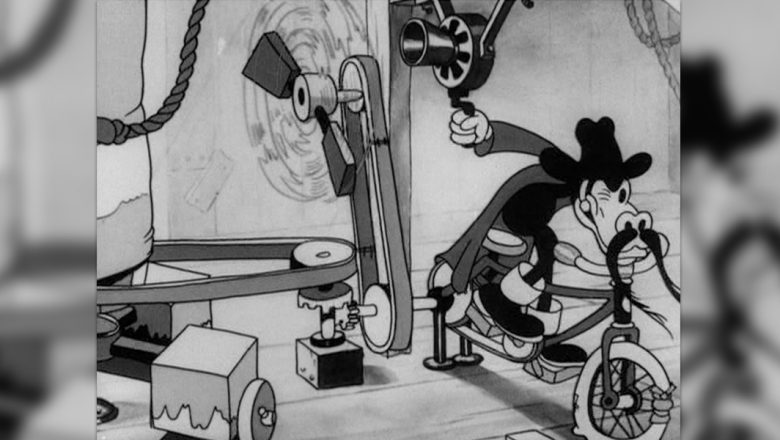The gag-laced Mickey’s Mellerdrammer, released on this day in 1933, is much more than an uproarious short showing Mickey and the gang putting on a doomed production of Uncle Tom’s Cabin with Horace Horsecollar as Simon Legree and Mickey as Uncle Tom. Stylistically, according to animation scholar Ron Barbagallo in his essay “A Blade of Grass,” the short reveals an innovative step forward under the direction of Disney Legend Wilfred Jackson. While the backgrounds in the pre-1932 shorts were more modest affairs, lacking detailed backgrounds and foregrounds, 1932’s Flowers and Trees revealed brilliantly colored foregrounds and backgrounds teeming with interesting nuances. That same approach and attention to detail appear in Mickey’s Mellerdrammer, which contains what Barbagallo characterizes as, “tone used more uniformly with respect to the entire background painting. Thin pencil lines still define the shapes of wooden floorboards and grass, and thin ink washes still fill in these shapes. However, great forethought was given to how the values of these washes could work together to draw your eye to the staging area. Darker, slightly thicker outlines… were drafted to pull more prevalent areas forward, as lighter, fainter pencil lines were placed in the background where they could not compete with foreground elements. Even… grass was now rendered with serenity and some care to capture its actual anatomy.” Barbagallo adds that it was advances like these that set the stage for future accomplishments such as Snow White and the Seven Dwarfs in 1937.



